Filter by

National Language Planning and Language Shifts in Malaysian Minority Communities
Controversies and problems with regard to language policy and language education still exist in Malaysia. Despite the attempts of language policy makers to promote multilingualism, the implementation has been marred by political and religious affiliations. Malaysia is a melting pot of many different cultures and ethnicities, the three largest being Malay, Chinese and Indian. Therefore, an analy…
- Edition
- -
- ISBN/ISSN
- 9789089642714
- Collation
- -
- Series Title
- -
- Call Number
- -

The evolution of grounded spatial language
This book presents groundbreaking robotic experiments on how and why spatial language evolves. It provides detailed explanations of the origins of spatial conceptualization strategies, spatial categories, landmark systems and spatial grammar by tracing the interplay of environmental conditions, communicative and cognitive pressures. The experiments discussed in this book go far beyond previous …
- Edition
- -
- ISBN/ISSN
- 9783944675466
- Collation
- -
- Series Title
- -
- Call Number
- -
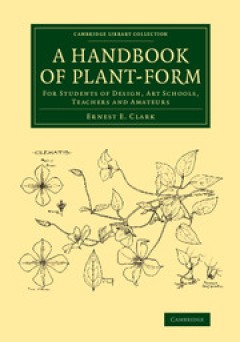
A Handbook of Plant-Form For Students of Design, Art Schools, Teachers and A…
Written and richly illustrated by the Derby-born artist Ernest Ellis Clark (1869–1932), this guide was originally published in 1904 to demonstrate the decorative possibilities of certain plants, mainly English wild flowers, to art students sitting examinations in plant drawing and design. Clark emphasises the importance of retaining a certain amount of botanical accuracy and provides examples…
- Edition
- -
- ISBN/ISSN
- 9781107262225
- Collation
- -
- Series Title
- Cambridge Library Collection - Botany and Horticulture
- Call Number
- -

Carl Strehlow’s 1909 Comparative Heritage Dictionary: An Aranda, German, Lo…
Carl Strehlow’s comparative dictionary manuscript is a unique item of Australian cultural heritage; it is a large collection of circa 7,600 Aranda, 6,800 Loritja (Luritja) and 1,200 Dieri to German entries compiled at the beginning of the twentieth century at the Hermannsburg Mission in central Australia. It is an integral part of Strehlow’s ethnographic work on Aboriginal cultures that his…
- Edition
- -
- ISBN/ISSN
- 9781760462062
- Collation
- -
- Series Title
- -
- Call Number
- 423
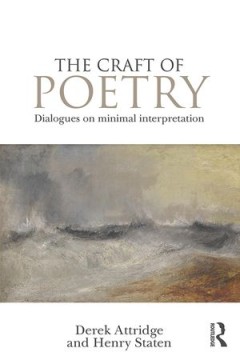
The Craft of Poetry : Dialogues on Minimal Interpretation
This book presents an innovative format for poetry criticism that its authors call "dialogical poetics." This approach shows that readings of poems, which in academic literary criticism often look like a product of settled knowledge, are in reality a continual negotiation between readers. But Derek Attridge and Henry Staten agree to rein in their own interpretive ingenuity and "minimally interp…
- Edition
- -
- ISBN/ISSN
- 9781317532583
- Collation
- 174 halaman
- Series Title
- -
- Call Number
- 800 ATT c
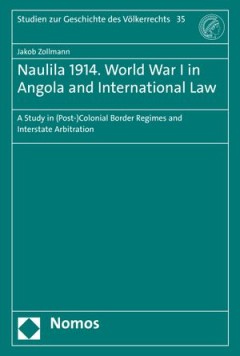
Naulila 1914, World War I in Angola and International Law : A Study in (Post-…
In 1885, Germany and Portugal became neighbours in Africa. The newly founded colony of German Southwest Africa prevented the southwards expansion of the ancient colony of Angola. The border along the Cunene and Kavango Rivers remained under dispute. After the outbreak of World War I in Europe, Portugal’s neutrality was questioned in German Southwest Africa, and when a group of German official…
- Edition
- 1
- ISBN/ISSN
- 9783845271606
- Collation
- 516 halaman
- Series Title
- Studien zur Geschichte des Völkerrechts
- Call Number
- 340 ZOL n
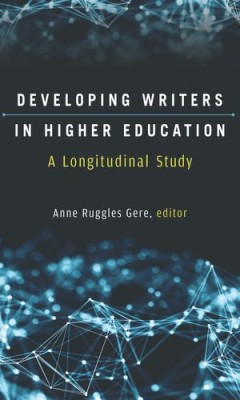
Developing Writers in Higher Education : A Longitudinal Study
For undergraduates following any course of study, it is essential to develop the ability to write effectively. Yet the processes by which students become more capable and ready to meet the challenges of writing for employers, the wider public, and their own purposes remain largely invisible. Developing Writers in Higher Education shows how learning to write for various purposes in multiple disc…
- Edition
- -
- ISBN/ISSN
- 9780472901036
- Collation
- -
- Series Title
- Sweetland Digital Rhetoric Collaborative
- Call Number
- 370 DEV
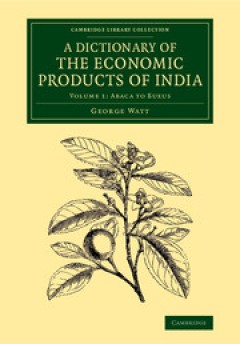
A Dictionary of the Economic Products of India
A Scottish doctor and botanist, George Watt (1851–1930) had studied the flora of India for more than a decade before he took on the task of compiling this monumental work. Assisted by numerous contributors, he set about organising vast amounts of information on India's commercial plants and produce, including scientific and vernacular names, properties, domestic and medical uses, trade statis…
- Edition
- -
- ISBN/ISSN
- 9781107239210
- Collation
- -
- Series Title
- Cambridge Library Collection - Botany and Horticulture
- Call Number
- -
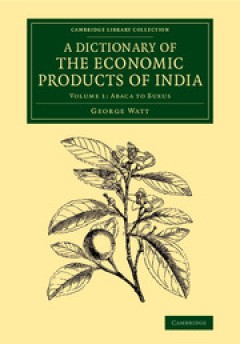
A Dictionary of the Economic Products of India
A Scottish doctor and botanist, George Watt (1851–1930) had studied the flora of India for more than a decade before he took on the task of compiling this monumental work. Assisted by numerous contributors, he set about organising vast amounts of information on India's commercial plants and produce, including scientific and vernacular names, properties, domestic and medical uses, trade statis…
- Edition
- -
- ISBN/ISSN
- 9781107239159
- Collation
- -
- Series Title
- Cambridge Library Collection - Botany and Horticulture
- Call Number
- -
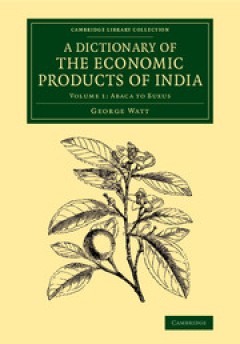
A Dictionary of the Economic Products of India
A Scottish doctor and botanist, George Watt (1851–1930) had studied the flora of India for more than a decade before he took on the task of compiling this monumental work. Assisted by numerous contributors, he set about organising vast amounts of information on India's commercial plants and produce, including scientific and vernacular names, properties, domestic and medical uses, trade statis…
- Edition
- -
- ISBN/ISSN
- 9781107239197
- Collation
- -
- Series Title
- Cambridge Library Collection - Botany and Horticulture
- Call Number
- -
 Computer Science, Information & General Works
Computer Science, Information & General Works  Philosophy & Psychology
Philosophy & Psychology  Religion
Religion  Social Sciences
Social Sciences  Language
Language  Pure Science
Pure Science  Applied Sciences
Applied Sciences  Art & Recreation
Art & Recreation  Literature
Literature  History & Geography
History & Geography